What Makes A Perfect Steak
“The only time to eat diet food is while you’re waiting for the steak to cook” – Julia Child
With Memorial Day just a day away, many of us will be at a barbecue grilling burgers and steaks. A couple of weeks ago, I read an article in the Wall Street Journal by food writer and author Mark Schatzker called Having a Cow About Steak Quality It is changing how I now look at beef and how I will purchase it.
I spoke with Mark last week about his quest for flavorful beef and his new book Steak: One Man’s Search for the World’s Tastiest Piece of Beef published by Viking. Mark traveled around the world in 80 days to find the perfect steak and chronicled his journey in his new book. I have not read it yet, but if it is as good as the article I read in the Wall Street Journal, I’m sure it will be great.
Be sure to read my interview with Carrie Oliver , in which she discusses grass-fed beef and her coined term, “Artisan Beef.”
Interview with Food Writer Mark Schatzker
Hi Mark, Let me start by asking you how you became so interested in beef that you traveled the world to write a book about finding the best beef available.
I became interested in steak for one straightforward reason: I love how it tastes. I love how other meats taste, particularly lamb, duck, and pork, but there’s something about steak. At least once a week, a formidable craving sets in.
However, my relationship with steak was lopsided. Steak kept letting me down. Too many of the steaks I was cooking were bland and uninteresting; they didn’t quite have the beefy punch I expected them to have.
And then, very occasionally, I’d eat an outstanding steak. What was going on? Why was so much steak mediocre and so little of it good? I wanted answers. I wanted to know the secret to a good steak. I started buying steaks and phoning up ranchers, and eventually, it all led to this book.
For those of us who have not read Steak yet, what can we expect to learn from it?
For most, I think readers will enjoy the voyage, traveling to Japan to eat Kobe beef and find out if they massage their cattle with sake and feed them beer or going to Argentina in search of that country’s legendary grass-fed beef. More importantly, however, I think they’ll learn there is so much to this beautiful meat.
For example, did you know there are almost as many “volatile aromatic compounds” in a grilled steak as in a glass of red wine? I want readers to come away with a genuine understanding of steak, the complex chemicals that make it flavorful, how feed affects the way a steak tastes, what happens to a steak when it’s cooked, why a well-done steak tastes so different from one cooked medium rare, and so forth. Let’s face it: steak deserves no less.
You can purchase Mark’s book here.
Will it help us find great-tasting beef?
Yes. Finding it is not easy, though it is getting easier every day. But if steak lovers aren’t armed with knowledge, they play steak roulette every time they buy a rib eye or strip loin.
In your Wall Street Journal article, you discuss how, back in 1926, the USDA thought “fatter cattle tasted better than lean ones, so long as they weren’t too old. So that’s what they looked for: plump, well-fed cattle. They looked for fat on the ribs, called feathering, and fat on the flank, called frosting. If there was too much fat, the beef achieved the highest grade, Prime.”
You disagree that fat on today’s cows equals flavor. Can you explain why today’s fat is less flavorful? Isn’t fat fat?
The problem has been the assumption that fat itself is where the flavor is coming from. This may be the mantra of the grilling world, but it’s demonstrably false. Fat adds richness, mouth feel, and juiciness to a steak, but not much beefy flavor.
Want proof?
Eat a spoonful of beef tallow or lard, and tell me what it tastes like. Anyone who’s ever eaten wild venison will know that lean meat can have a robust flavor. The story of where flavor comes from in a steak is fascinating but also complex, and I think the best way for people to get the complete picture is to buy the book.
But I will say this: Back in 1926, fatter cattle tasted better, but not because of the fat. The fat indicated that the cattle were a little older and that they’d been eating good feed. So, the USDA began rewarding ranchers and cattlemen who could produce fatter cattle.
What happened was predictable: the industry got very good at producing fat cattle very cheaply. A fat cow in 1926 would have eaten grass and perhaps some other feeds like cotton-seed cake, snap-ear corn, or beet pulp. A fat cow today eats steamed and flaked GMO corn. They may both be fat, but they won’t taste the same.
Can you talk about some of the drugs they are using in the cattle industry today and why they are using them?
“Growth promotants” are a big one. Cattle can be treated with these as many as three or four times during their increasingly short lives. We’re talking about growth hormones and steroids. When cattle are treated with them, they get bulkier faster. As a result, the yield improves. You get more meat on the same amount of feed. It’s all about dollars and cents, of course. Flavor never enters the equation.
There’s another much newer drug called beta-agonists. These promote muscle mass. No one seems to know quite why, but they do. Studies have shown that beta-agonists also make cattle jittery and can, in higher doses, cause them extreme discomfort. Regarding steak quality, beta-agonists are known to make beef more challenging. But their use is prevalent because if one feedlot is using them, their beef will be a few cents a pound cheaper, giving them an advantage over the other feedlots.
Therefore, the other feedlots have no choice but to start using beta-agonists or slowly lose customers and go out of business. That’s how a commodity system works. Flavor isn’t given a single thought.
So, if I can’t depend on the USDA grading system of Prime, Choice, or Good (Select), how do I determine if a steak I purchase will be flavorful?
The only truly reliable way is to eat it. But there are questions you can ask in advance that vastly improve your chances. I’d advise people to look for slightly older cattle, say around 24 months old.
Look for cattle that haven’t eaten too much grain. Grain gets cattle fat, but it also dulls the flavor. I have eaten good grain-fed steak, but I find that the less grain a cow eats, the more intensely flavored its meat will be.
However, it’s anything but simple. My one great steak love is excellent grass-fed beef — “grass-fed” refers to cattle that have never eaten so much as a kernel of corn. There’s not much of it. A lot of grass-fed beef is, quite frankly, awful. To make matters a tad more simple, here are some online places to get a good steak.
- Light grain-fed beef: Greyledge Farm
- Grass-fed beef: Tallgrass Beef or Alderspring Ranch
There are more on my website: Mark Schatzker’s Steak
What do I look for when it comes to :
- Color – The experts tell you to look for flesh that is cherry red. I disagree with this. When cattle get a bit older, their flesh darkens. This will be a steak that has more flavor.
- Texture – Look for steak with a fine grain in the muscle.
- Touch – When touching it, it should be tender and soft. If you feel veins of gristle with your finger, beware.
- Marbling – Hard to say. I’ve eaten extremely lean steaks that were outstanding. But with grass-fed are lightly grain-fed beef, marbling can indicate a better steak. But not necessarily. And as far as standard supermarket beef goes, I don’t think it means much at all. I’ve eaten extremely marbled steaks that had as much flavor as a glass of tap water.
- Smell – It should have a beefy smell. Some grass-fed beef can smell a little grassy. Don’t be put off by that. The beef may well be outstanding.
Can you tell me about the photo of the steaks at the top of this post?
This is a picture of three AWESOME rib eyes from Alderspring Ranch that I ate with my wife and kids at the family cottage. Notice the slightly deeper color. Notice that there is a relative lack of marbling compared to Prime. And here’s a big one — the fat color. It’s yellow. It’s not bright yellow, but certainly a deep ivory. That’s beta carotene from the grass, which is suitable for you. The USDA doesn’t like yellow fat. The USDA loves white, flaky fat. But there is nothing wrong with yellow fat from a flavor point of view. It’s solely about appearance, which is idiotic. I prefer a steak with yellow fat because I think there’s a greater likelihood it’ll have flavor.
What makes one steak more tender than another, other than how it is cooked? For example, I have purchased both Choice and Prime New York Strip steaks from Costco, and the Prime was more tasty and much more tender. Do you have any ideas why?
Tenderness is related to muscle fibers. It can be influenced by various factors, from how a cow is handled on the day of its slaughter (gentler is better) to how quickly it gains weight (cows need to gain around 2 lbs a day to be tender). The genetics of the individual cattle also play a very large role in tenderness.
Your experience with Prime is enjoyable. I generally find it to be overrated. I’ve eaten scores of Prime steaks that had almost zero flavor. Now and again, however, you do find a good one. I think the reason some Prime is tasty isn’t due to the marbling. Marbling doesn’t make a steak any more tender or flavorful, though it may make it more juicy.
I think the reason is that cattle need time to put on that much fat, so it’s coming from little older cows. They were either older when they arrived at the feedlot and had more time to eat grass, or they stayed a little longer than the others.
Your article says, “The way a steak tastes has much to do with what a cow eats—and the best beef is raised on grass.” Okay, I’ll go along with that, but where does one find grass-fed cows, and isn’t it going to cost a fortune?
I qualify that by saying I have eaten some good, sometimes great, grain-fed steaks. But the absolute top for me is, indeed, grass.
You can find grass-fed beef everywhere now—farmers markets, the internet, and even Whole Foods, which has recently begun a nationwide grass-fed program. But keep in mind that many ranchers are selling grass-fed beef that’s too young and from poor breeds that have been grazed on lousy grass.
This steak won’t taste delicious. It might not taste very good. It would help if you found grass-fed steak produced by graziers who know what they’re doing. You want the Robert Mondavi of grazing, not your eccentric neighbor who buys Chilean grape juice and ferments it himself.
Will it cost a fortune? That depends on your definition of a fortune. A lot of people drink wines that cost $50 or $100. In that case, great steak is a bargain. But great steak will never be cheap. It can’t be. It takes time and care, and there isn’t much steak on a side of beef.
So, as much as we all dream about buying an incredible steak for $10, it doesn’t happen. It’s a fantasy. Furthermore, I believe it’s dangerous to want food to be cheap. This is stuff we’re putting inside our bodies. If there’s anything we should pay a little more for, it’s food.
What about the breed of a cow? Is that an essential determining factor?
Yes and no. Some breeds do have unique palatability traits. For example, Highland cattle have very finely-grained meat. The Japanese Black Wagyu, which produces the world-famous Kobe beef, has an enzyme that desaturates the fat, which leads to a different mouthfeel and, in my opinion, characteristically sweeter flavor. (Black Wagyu also marble like crazy.)
But a breed is only as good as the rancher or farmer raising it. If you take a handful of breeds and stick them in a feedlot and feed them steamed, flaked corn, you’ll find some differences in flavor, but they’ll be pretty mild.
It’s also important to recognize that many claims made about breeds are false. For example, the breed requirement for Certified Angus Beef is that the meat comes from a cow that is 51% black hide. The thinking is that Angus cattle are black, so any hide more than half black must be Angus. It’s some of the lamest logic I’ve ever heard. For one thing, Angus cattle are also red. And here’s another thing: many other breeds are black, too. As a matter of fact, Holsteins possess blackness in excess of 51%. Don’t get me started on this…
What about a cow’s age when it comes to slaughter? Does that influence the overall taste of the steak?
Yes. Too much of the beef we’re eating now is too young. It’s more like mature veal than beef. In Europe, some butchers proudly serve beef from 10-year-old cattle. The older the cow is, the more beefy the meat will taste. I’ve spoken to many farmers and ranchers about this. A surprising number have told me that a four or five-year-old heiferette (a cow with one calf) is the best-tasting beef, period. Good luck finding one of those, however.
Speaking of aging, can you talk a little about the difference between dry aging and wet aging? What are they, how important is aging beef, and what is ideal for the best-tasting steak?
When beef cuts are sealed in cryovac plastic and put on a shelf to age, they are wet-aged. When cuts of beef are hung from a hook in a fridge, they are dry-aged.
The first thing you need to know about aging is that it’s extremely important. Fresh beef is less juicy, stringy, and milder in flavor than aged beef. When beef ages, enzymes break down muscle fibers into amino acids. This makes the beef more tender and enhances the flavor. (The fascinating chemistry behind this is all in the book.)
The second thing you need to know about aging is it’s hugely overrated. Studies suggest that most aging benefits happen in the first ten days. However, it’s gotten very trendy for butchers and steak houses to sell steaks aged 40 or maybe even 60 days. A good steak shouldn’t need to be aged that long. The most tender steak I have ever eaten was aged three weeks. Those butchers and steak houses exploit the aging myth to charge steak lovers a lot of money.
There is also a cult around dry-aged beef. I think people are taking this a bit far. I’ve had excellent wet-aged beef and some bad dry-aged beef. It all depends on the kind of beef and the butcher who ages it. My preference leans slightly toward dry-aged beef, but I’m far more concerned with what the cow ate and how old it was when it was slaughtered than how it was aged.
Do ranchers raising and selling grass-fed steaks get their beef graded Prime, Choice, and Good? If so, is Prime going to be better than Choice?
Most of them don’t get it graded because the grading system is used by meat packers who don’t raise the meat — they slaughter it, cut it, and sell it to hotels, chain restaurants, supermarkets, etc. Most grass-fed producers sell directly to customers. However, the grading system makes more sense for grass-fed beef than grain-fed beef. I know of one rancher — Alderspring — that sells its very well-marbled steaks for more money than his regular steaks. I’ve eaten some of those steaks, and they are incredible.
Most websites I’ve found selling grass-fed beef send it to you frozen. What’s your opinion on freezing beef? Does it alter the flavor?
A lot of would-be steak snobs turn their noses up at frozen steak. I think this is a great shame. If steaks are well wrapped and flash frozen- frozen very quickly in a really cold freezer- I don’t think much is lost at all. Perhaps just a little bit of juiciness. But freezing allows someone like me who lives in Toronto to buy a steak from a small producer in Montana or Wyoming without having to go there personally. That’s a wonderful thing. I’d much rather eat a great frozen steak than a mediocre fresh one.
Flavor
So, how would you describe the difference in flavor between a steak from a properly grass-fed cow and one we purchase at our local supermarket?
A good grass-fed steak has an intense beefy flavor. It will taste sweet and nutty — there may even be a few other notes in there, like mushroom or Parmesan cheese — but above all else, it will be resoundingly and gloriously beefy.
Second, the flavor is dynamic. It tells a story in your mouth like a fine Bordeaux or Burgundy does. And it has a long finish. It’s not a sentimental, greasy echo that lingers in your mouth. It’s more like a beautiful symphony gently fading out. When I taste a great steak, I am sometimes so astonished by the incredibleness of the meat in my mouth that I close my eyes to let my mind take it all in.
Is the taste difference that noticeable?
More than you can imagine. I often do tastings with friends or fellow foodwriters. When they take a bite of good grass-fed beef, they go back to the crappy commodity steak and are equally astonished by its utter lack of flavor. The most common descriptors they use are “wet cardboard” and “glue.”
When judging steak taste, what flavors do you look for? When I drink a big Cabernet Sauvignon, I might taste nuances of many different flavors, including plum, cherry, vanilla, tobacco, or blackberry. Are there flavors associated with great-tasting steak?
Finding flavor notes in steak is starting to become popular, as we do in wine. Personally, I don’t quite buy that model with steak or wine. I think there certainly are notes that one can pick up, but I feel that expressing them can be misleading because what does not get expressed are all the notes for which we don’t have names.
I tend to look for pronounced flavor, intensity, and finish in a steak. Sometimes, I’ll pick up identifiable notes, but sometimes, there’s a concert of meaty notes for which there aren’t names. Maybe it’s simpler to put it this way: you know it when you taste it.
What about other cuts of beef? Am I going to notice a big difference in taste when it comes to ground beef for a hamburger or chuck steak for a pot roast?
Yes, absolutely. I love grass-fed burgers, and burgers from good grain-fed beef are also leagues better than the regular stuff. You’ll find you don’t need nearly as many condiments. Beef soup made with better-quality beef has a richer, beefier flavor, and braised beef is similarly big on character.
I’ve seen some grass-fed ranchers say their beef is organic. What does that mean, and how important is it when buying beef?
Organic means that the cattle are raised without antibiotics, hormones, etc., and they eat organic feed. The organic feed includes grain, so not all organic beef is grass-fed, but some are. Does it mean much? I don’t think so. Most grass-fed beef ranchers don’t use pesticides, hormones, or antibiotics.
Any last tips for home cooks looking for that tender, delicious, beefy steak?
Sure. Let the steak get to room temperature before cooking it. Salt it for 5 minutes before cooking and then more when it’s done.
And don’t cook a really thick steak on a very hot grill because it’ll be black and bitter on the outside and raw on the inside. It’s essential to sear a steak to get the delicious crust on the exterior, but once that’s happened, you need to heat the interior gently. So after you flip, consider turning down the heat and letting the steak cook slightly slower. If you do that, you won’t need to rest your steak. It’ll be juicy and tender right off the grill.

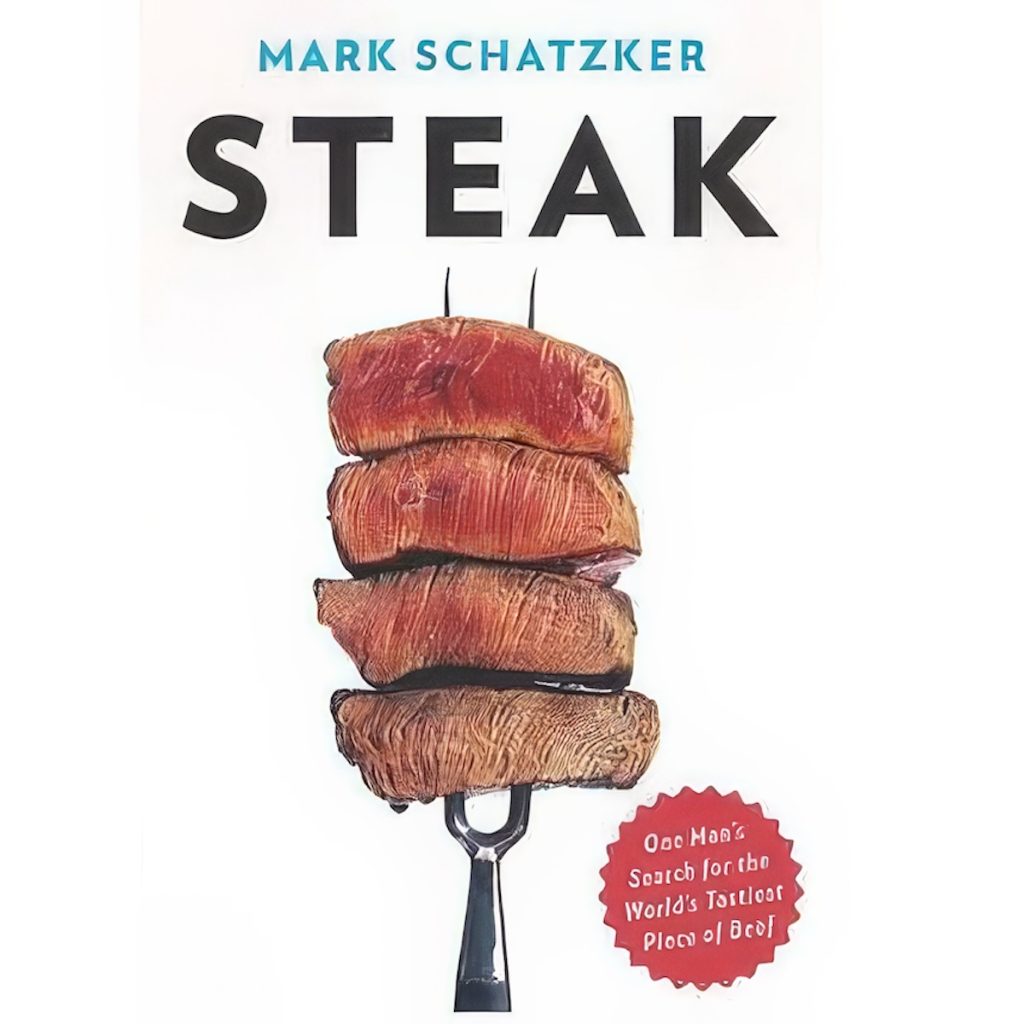

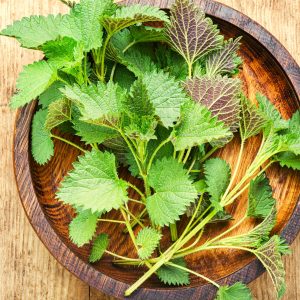


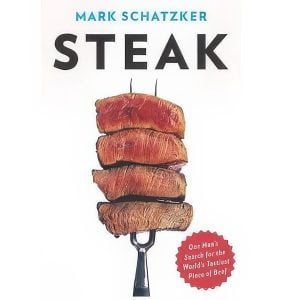
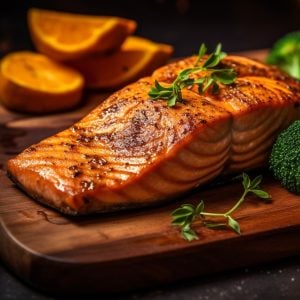
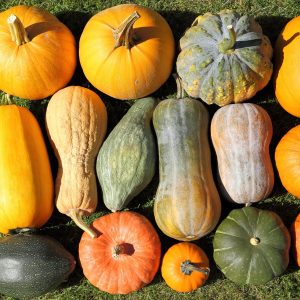


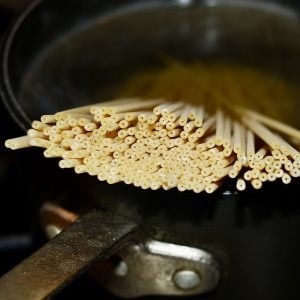

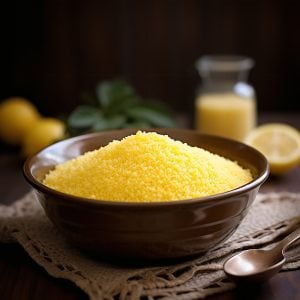
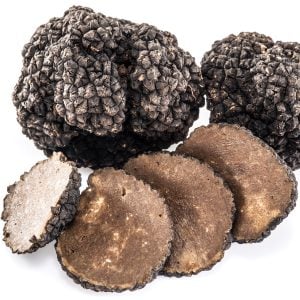


10 Responses
I am very confused on one part of this article. It says the following:
“However, it’s anything but simple. My one great steak love is excellent grass-fed beef refers to cattle who have never eaten so much as a kernel of corn. There’s not much of it. A lot of grass-fed beef is, quite frankly, awful. To make matters a tad more simple, where are some online places to get good steak.”
In one sentence he is saying that his favorite beef is grass fed…then he says grass fed beef is quite frankly awful. Is this a typo…did he mean corn fed beef is awful?
Am I missing something?
Hi Tiffany, Mark and I talked about this and he said the best steak he has ever eaten was grass fed but that doesn’t mean just because a cow is grass fed it is going to be excellent. What if the cow is grazing on weeds or onion grass? What is the weight of the cow at slaughter? How is the cow handled at slaughter? The breed of the cow. Where it is raised geographically. – RG
Ha, I love steak just as much as you do, but lack the training on my taste buds to enjoy the subtle or obvious hints of finer tastes in the meat. However, being in Malaysia, the beef here isnt exctly like the US type and those we get from Australia is anything but fresh-fresh.
I think the types of cow here are the Indian type or ignorantly me, not sure what exact breed it is called, but it definitely has a very distinct smell/taste to it that you can never find it on USDA beef. I tend to enjoy the local beef here much less than back in US college days where I enjoy cooking beef the most. Better beef for grilling and slightly inferior ones for stir fry.
Geographically, sigh… hard to find them, (the good beef), but in your composition, I am already drooling over your explicit explanation of the beef you deemed “good.” So, cheers for the tasty thought.
If you find out the breed of cattle raised in Malaysia, please let me know. Thanks for the comments. – RG
Hi Anthony,
I can’t say with certainty what kind of cattle they’re raising for beef in Malaysia — probably more than one variety. In all probability, they are at least part Indicus. This refers to a strain of cattle originating in India characterized by the hump on their shoulder. Indicus beef can be very good, I’m told, but it’s considered less tender than Taurus cattle (the cattle you find in Europe and most of North America).
As to why there is an unpleasant smell or taste, I can’t say. Is it very lean? I once had horse meat in Mongolia that tasted the way a horse smells on a hot summer day — not good. It almost put me off horse meat forever. But I recently had some horse tartare that was excellent. Meat quality has everything to do with how you raise the animal.
Hope this helps.
Mark
Thanks Mark – RG
Greetings! I enjoyed this article & will be purchasing the book, “Steak” soon!
Would love to invite you gentlemen to our family ranch in the beautiful Kansas Flint Hills. See how our family has been raising our All Natural heard for generations. Then come into town to our Meat Stores where we sell directly to consumers. I spend much of each day helping our customers select the right cut of meat for their tastebuds, family needs, and budget, then helping them decide how to prepare it.
I found your article very informative, although I differ in opinion on some points. However, as we all know, a Steak is a very personal statement. Thank you for this book & article. Tiya
Hi Tiya, thanks for the invitation and I’ll pass it on to Mark. I’ll contact you directly to hear more about your steaks. – RG
I was just investigating useful blog posts for those project research and when i happened to stumble with yours. Thanks for the actual helpful material!
Thank you – RG
This posting has been saved as a favorite, I really like your website!
Thanks Charolette.
Thanks for the info about “yellow fat” contained in your article. Bought some frozen filet mignon which had yellow fat and after it thawed out I thought it was “old”. Glad to know it was okay. Hope to purchase your book soon as I love good, tender steak!